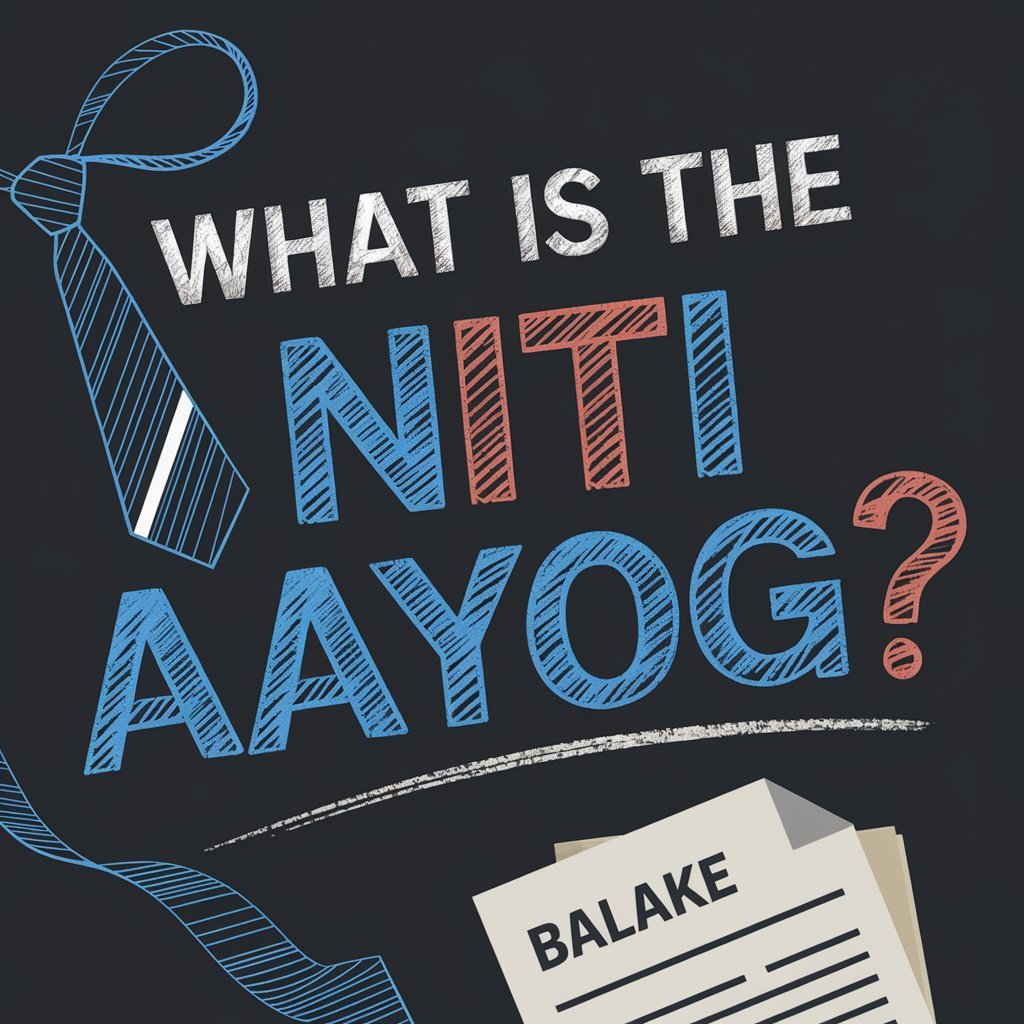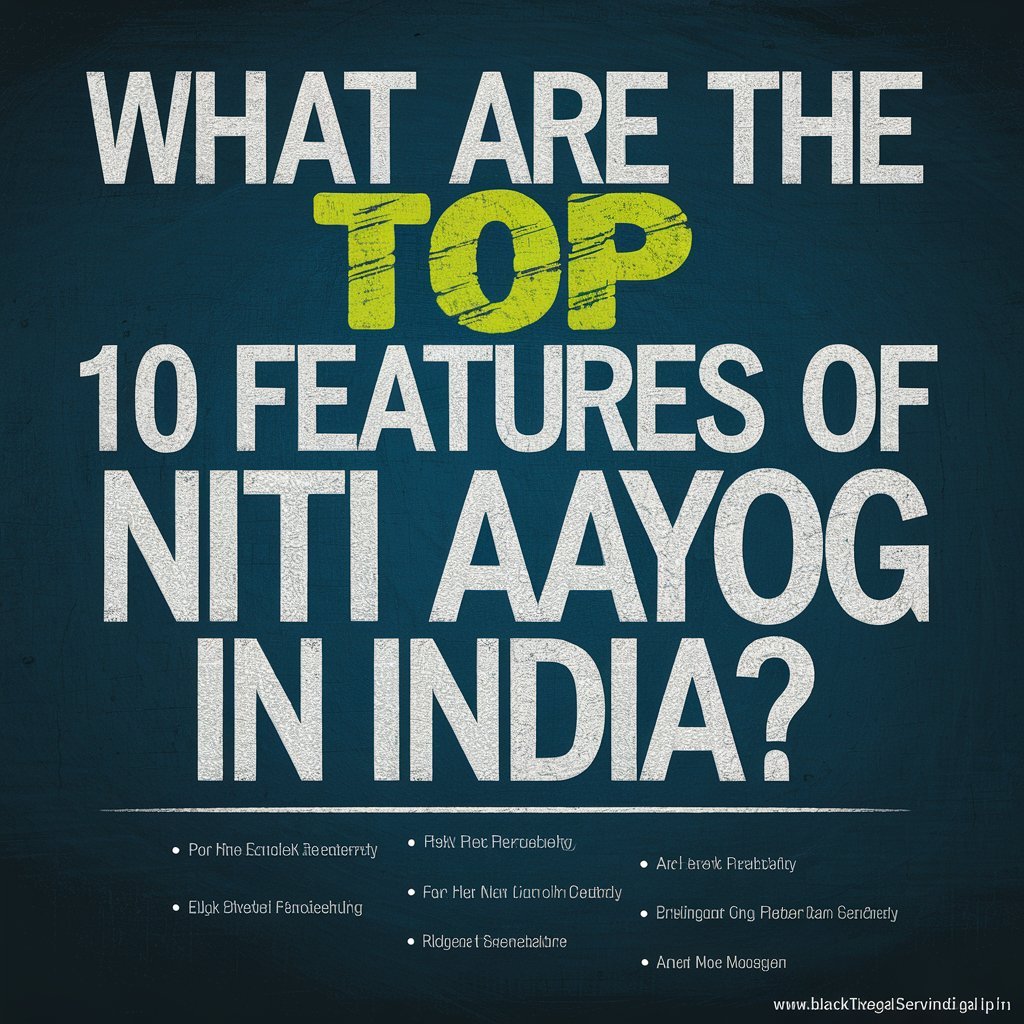In this blog, we explore the top 10 features of NITI Aayog, highlighting its vital role in India’s economic and social transformation. Established in 2015, NITI Aayog is India’s premier policy think tank that plays a crucial role in shaping the country’s development strategies. Unlike its predecessor, the Planning Commission, NITI Aayog focuses on promoting cooperative federalism, fostering innovation, and ensuring inclusive growth. It serves as an advisory body to the government, providing data-driven insights and formulating long-term policies that promote sustainable development.
- What is the Niti Aayog?
- What are the Top 10 Features of Niti Aayog in India?
- 1. Platform for resolving Issues:
- 2. Cooperative Federalism:
- 3. Knowledge and Innovation Hub:
- 4. Sustainable Development:
- 5. Economic Strategy:
- 6. Citizen Participation:
- 7. Transparency:
- 8. Resource Center:
- 9. Program Evaluation:
- 10. Indices:
- Conclusion
- FAQs
- Q1. What are the major features of Niti Ayog?
- Q2. What are the six objectives of NITI Aayog?
- Q3. What are the seven pillars of NITI Aayog?
- Q4. What is the aim of NITI Aayog?
- Q5. What is the old name of NITI Aayog?
- Q6. What is the role of the NITI Aayog?
- Q7. Which ministry does NITI Aayog come under?
- Q8. Who is the CEO of NITI Aayog?
- Q9. NITI Aayog was established on January 1, 2015, by a resolution of the Union Cabinet.
- Q. 10 Who is the first person of NITI Aayog?
What is the Niti Aayog?
NITI Aayog (National Institution for Transforming India) is a premier policy think tank of the Government of India, established to accelerate India’s economic development. It was created on January 1, 2015, replacing the Planning Commission. Its primary objective is to promote cooperative federalism by involving states in the development process and acting as an advisory body.
1. Policy Formulation: Acts as a forum for the formulation of strategic and long-term policies for economic growth and sustainable development.
2. Promoting Cooperative Federalism: Promotes cooperation between the Central and State Governments through structured support initiatives and partnership models.
3. Monitoring and Evaluation: Provides data-driven information and evaluation about the implementation of government programs and initiatives.
4. Promoting Innovation: Innovation is supported through initiatives such as the Atal Innovation Mission (AIM) to encourage entrepreneurship and research.
5. Resource Allocation: Advising the government on equitable allocation of resources to meet developmental goals.
6. Sustainable Development Goals (SDGs): Coordinates India’s efforts to achieve the SDG goals in collaboration with the States and Union Territories.

What are the Top 10 Features of Niti Aayog in India?
1. Platform for resolving issues:
2. Cooperative federalism:
3. Knowledge and Innovation Hub:
4. Sustainable development:
5. Economic strategy:
6. Citizen participation:
7. Transparency:
8. Resource Center:
9. Program evaluation:
10. Indices:
To Registration of the NITI Aayog Contact Our Expert Legal Adviser

1. Platform for resolving Issues:
A special features of NITI Aayog is that it works as a forum to resolve issues between the Central and State Governments as well as among the States. This coincides with its focus on promoting cooperative federalism.
1. Governing Council: Helps build consensus on national priorities.
2. Inter-Ministerial Coordination: Aligns central policies and ensures synergy.
3. Interstate arbitration: Addresses issues like resource sharing and regional disparities.
4. Decentralised support: Provides tailored solutions for state-specific challenges.
5. Expert Committees: Recommend implementable solutions to complex problems.
2. Cooperative Federalism:
Cooperative federalism is one of the cornerstone features of NITI aayog, reflecting its emphasis on promoting cooperation between the central and state governments for holistic development. This feature enables better integration of national and regional priorities, ensuring that all parts of India work Collectively towards shared goals.
1. Governing Council: Includes the PM Chief Ministers and UT administrators for inclusive decision-making.
2. Bottom-Up Approach: State Contributes to national policy, ensuring regional priorities are addressed.
3. State-specific plans: Supports: Supports region-tailored strategies for development.
4. Aspirational Districts: Joint efforts to uplift underdeveloped areas.
5. Conflict Building: Offers technical and financial assistance to strengthen governance.
3. Knowledge and Innovation Hub:
The Knowledge and Innovation Hub feature of NITI Aayog establishes it as a hub for research, innovation, and transformative policy making. It focuses on the following.
1. Policy Research: Conducting data-driven studies and publishing insights.
2. Emerging technologies: Promoting AI, blockchain, and IoT for governance.
3. Collaboration: Partnerships with global think tanks and institutions.
4. Atal Innovation Mission: To promote startups and creativity through incubators and tinkering labs.
5. Use of real-time data: Leveraging analytics for policy design and transparency.
6. Sustainable Development: Innovation for Renewable Energy, Agriculture and Sustainable Development Goals.

4. Sustainable Development:
Sustainable development is a key feature of NITI Aayog, which aligns India’s policies and programs with the global Sustainable Development Goals (SDGs) and promotes inclusive growth. Let’s find out how NITI Aayog integrates sustainable development into its functioning.
1. SDG Implementation: Acts as the nodal agency for achieving the Sustainable Development Goals (SDGs) and publishes the SDG India Index to monitor progress.
2. Policy for Sustainability: Outline strategies focused on renewable energy, water conservation, and climate resilience.
3. Climate action: Promote green energy disaster resilience and target net-zero emissions by 2070.
4. Sustainable Agriculture: Encourages organic farming, water efficiency, and eco-friendly practices.
5. Urban and Rural Development: Supports sustainable rural programs such as Smart Cities and Aspiring Districts Programme.
5. Economic Strategy:
The economic strategy as characterized by Niti Aayog focuses on sustainable development, structural reforms and inclusive growth. The key aspects include.
1. Policymaking: Develop long-term strategies for sectors such as agriculture, infrastructure, and manufacturing.
2. Economic Reforms: Advocates privatization, labor reforms and ease of doing business.
3. Resource Optimisation: Ensures efficient resource allocation at national and state levels.
4. Private Sector Participation: Promoting FDI and public-private partnerships for economic development.
5. Inclusive Growth: Reduces regional disparities through programs such as the Aspirational Districts Programme.
6. Innovation Support: Promoting entrepreneurship through initiatives like Atal Innovation Mission.
7. Export-led growth: Strengthen policies to boost exports and global competitiveness.
8. Monitoring: Evaluating and tracking the progress of economic reforms for better results.
6. Citizen Participation:
Citizen participation is a key feature of NITI Aayog, which promotes inclusive and transparent governance by actively involving the public in policy-making and implementation. The key aspects include.
1. Public Consultation: Feedback is collected through platforms such as MyGov—and public forums.
2. Technology integration: Uses digital tools for surveys and idea crowdsourcing.
3. Technology integration: Uses digital tools for surveys and idea crowdsourcing.
4. Stakeholder Inclusion: Citizens as well as NGOs, civil society and academia are involved.
5. Awareness Campaigns: To educate citizens about their role in initiatives like the Aspiring Districts Programme.
6. Social Audit: Promotes citizen oversight and accountability in governance.

7. Transparency:
Transparency is a key feature of Niti Aayog, which ensures accountability and openness in governance. Let us find out how Niti Aayog emphasizes transparency.
1. Data-driven policies: Use an evidence-based approach for transparent policy-making.
2. Public Reports: Publishes regular accessible reports on government initiatives.
3. Real-time monitoring: Progress is monitored through dashboards like the Aspiring District Dashboard.
4. Stakeholder engagement: This includes diverse voices through consultation and partnerships.
5. Performance Ranking: Evaluates states and union territories with transparent criteria (e.g., SDG India Index).
6. Open Data Access: Provides public access to developmental data through platforms such as the National Data Analytics Portal.
7. Independent Evaluation: The program collaborates with impartial organizations for evaluation.
8. E-Governance: Promotes digital workflows for accountability and reduced inefficiency.
8. Resource Center:
The Resource Centre is an integral feature of NITI Aayog, which acts as a knowledge hub and repository for policy formulation and implementation. Here is how it works as a feature.
1. Knowledge Repository: Stores comprehensive data, research reports, and best practices for policy making.
2. Policy Research: Provides insights and data for socio-economic strategies.
3. Collaboration Centre: Connects academia, industry experts, and NGOs for developmental initiatives.
4. Technology support: Drives innovation with tools for data analysis and administration.
5. Capacity Building: Provides training and workshops for stakeholders and officials.
9. Program Evaluation:
Program evaluation is one of the key features of NITI Aayog. It plays a vital role in ensuring that government policies and programs are implemented effectively and achieve their desired results. Here is how NITI Aayog focuses on program evaluation.
1. Monitoring and Evaluation of Schemes: Monitors the progress and effectiveness of programs in areas such as health and education.
2. Evidence-based recommendations: Generates data for informed policy decisions.
3. Performance-based framework: Evaluates programs based on pre-determined goals and criteria.
4. Participatory approach: Involving stakeholders such as state governments and the public for relevant feedback.
5. Technology-driven: Uses data analytics and digital tools for real-time assessment.
10. Indices:
Here is a list of the key features of NITI Aayog in the form of an index, highlighting its role and functions.
1. Policy Formulation and Strategic Planning: To develop a national strategy for development.
2. Cooperative federalism: Encourages cooperation between the central and state governments.
3. Decentralised Approach: Promotes bottom-up planning process.
4. Data analysis and research: use data for policy design and monitoring.
5. Innovation and Entrepreneurship: Supports startups and innovation through initiatives like AIM.
6. Sustainable Development Goals (SDGs): Coordinates efforts to achieve the SDGs.
7. Economic Reforms: Pursues economic and structural reforms.
8. Aspiring Districts Programme: Focuses on the development of backward districts.
9. Technology Adoption: Promotes digital transformation and emerging technologies.
10. Monitoring and Evaluation: Evaluate and monitor policy implementation.
Conclusion
NITI Aayog plays a vital role in shaping India’s policy landscape and advancing its development agenda. By promoting cooperative federalism, focusing on data-driven governance, and fostering innovation and entrepreneurship, the Features of NITI Aayog have established themselves as a key driver of sustainable economic growth. Its emphasis on inclusive growth through initiatives such as the Aspirational Districts Programme and Coordination for Sustainable Development Goals ensures that the benefits of progress reach all corners of the country. With its visionary approach, NITI Aayog continues to steer India towards a more prosperous, innovative, and equitable future.
FAQs
Q1. What are the major features of Niti Ayog?
ITI Aayog’s activities can be divided into four major areas:
Policy and programme framework
Cooperative federalism
Monitoring and evaluation
Think tank and innovation hub.
Q2. What are the six objectives of NITI Aayog?
NITI Aayog is based on seven pillars of effective governance: pro-people, pro-active, participatory, empowering, inclusive, equitable, and transparent.
Q3. What are the seven pillars of NITI Aayog?
NITI Aayog is based on seven pillars of effective governance – (1) People-centric (2) Proactiveness (3) Participation (4) Empowerment (5) Inclusion (6) Equity (7) Transparency.
Q4. What is the aim of NITI Aayog?
Launched in 2016 by NITI Aayog, AIM aims to promote innovation and entrepreneurship in schools, educational institutions, research centres, industries and MSMEs.
Q5. What is the old name of NITI Aayog?
On 1 January 2015, the Government of India replaced the Planning Commission with the newly formed NITI Aayog (National Institution for Transforming India).
Q6. What is the role of the NITI Aayog?
NITI Aayog oversees the adoption and monitoring of the Sustainable Development Goals in India, as well as promotes competitive and cooperative federalism among states and union territories.
Q7. Which ministry does NITI Aayog come under?
NITI Aayog, under the Ministry of Planning, is the premier policy think tank of the Government of India, providing directional and policy inputs. The current Minister of State for Planning is Rao Indrajit Singh.
Q8. Who is the CEO of NITI Aayog?
Shri BVR Subrahmanyam became the CEO of NITI Aayog on February 25, 2023.
Q9. NITI Aayog was established on January 1, 2015, by a resolution of the Union Cabinet.
NITI Aayog was established on January 1, 2015, by a resolution of the Union Cabinet.
Q. 10 Who is the first person of NITI Aayog?
Narendra Modi was the first chairman of NITI Aayog. UGC NET December 2024 notification was released on 19th November 2024.


Add a Comment